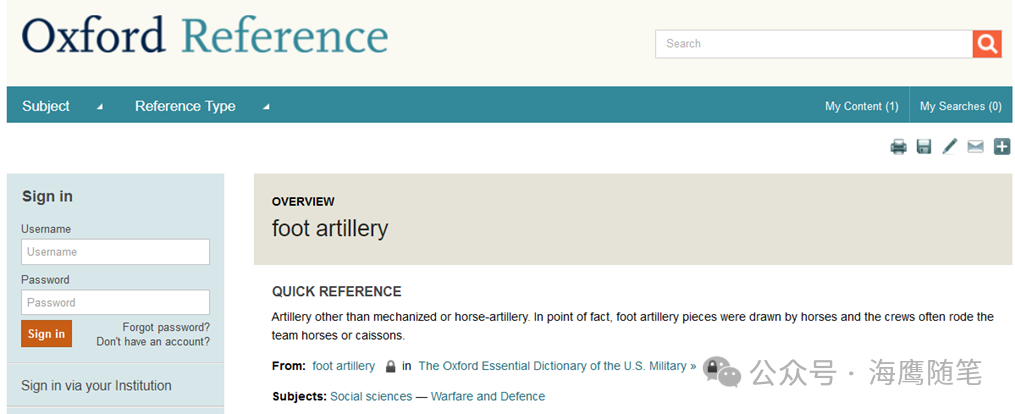首先是字典里对footartillery的释义:

foot artillery
Artillery other than mechanized or horse-artillery. Inpoint of fact, foot artillery pieces were drawn by horses and the crews oftenrode the team horses or caissons.
From: footartillery in The Oxford Essential Dictionary of the U.S. Military »
Subjects: Social sciences — Warfare and Defence
步炮兵:
除机械化或骑兵炮兵外的火炮。事实上,火炮是由马匹牵引的,炮兵则是经常搭乘马队或弹药箱(马车)。
科目:社会科学——战争与防御
根据对ArtilleryTactics and Combat,Napoleonic Wars (1805 - 1815)里对拿破仑时期战术的描述,拿破仑战争期间的野战炮兵可以分为步兵炮兵(步炮兵)和骑兵炮兵(骑炮兵):
步炮兵
火炮由马牵引,炮手则步行。步炮兵为步兵提供火力支援,使用数量最多的是6磅炮,其构成了步炮兵连的主体。12磅炮是组成重炮连使用,通常被保留在军团或军级预备。最轻的加农炮(2磅和3磅炮)并不是编为炮兵连使用,主要是单独分配给步兵营和团。
骑炮兵
火炮使用马匹牵引,炮兵也是通过马车或是火炮和前车机动(不排除也单独使用马匹机动的可能)。快速行进和快速射击的骑炮为骑兵提供了火力支援。骑炮兵主要是使用4磅炮和6磅炮组成骑炮连使用。
关于一战德国炮兵的描述也有对Foot artillery的描述:
Foot artillery, referred to as Fußartillerie inGermany, was considerably more complex and covered a variety of differentweapons. Its proper domain was siege warfare in attack and defense. Mobilitywas of secondary importance. Of greater importance were the distance and impactof the individual shells. The Russo-Turkish War (1877/1878) had demonstratedthat light field guns were not able to destroy improvised field fortifications.In Germany, this led to the buildup of “heavy artillery in the field army” withthe newly manufactured large caliber guns that were still sufficientlymaneuverable for mobile warfare. In 1914, Germany had an obvious lead in thistype of artillery.
Heavy artillery also included heavy mortar fire. Thisencompassed special guns with calibers of over thirty centimeters that wereutilized for fighting against modern armoured turret fortifications.
Along with caliber and distance, the trajectory of around was an important criterion for judging the capabilities of guns. Cannonsfired with flat trajectories; howitzers and mortars, by contrast, had curvedlines of fire. The latter were thus able to shoot over high cover or hittargets behind them, since the shells descended at a steep angle at the end oftheir flight paths.
步炮兵(Footartillery),在德国被称为Fußartillerie,要复杂得多,涵盖了多种不同的武器。其使用的领域是攻城战的进攻和防御(从此角度描述,更偏向于攻城,但实际笔者并未查到攻城炮兵的说法)。火炮机动性是次要的,更重要的是各种炮弹的射程和影响。俄土战争(1877/1878)证明轻型野战炮无法摧毁简易野战工事,这使得在德国集中了“野战军中的重型火炮”,其中包括新制造的大口径火炮,这些火炮仍然具有足够的机动性以进行运动战。1914年,德国在该型火炮方面处于明显领先地位。
重型火炮还包括重型迫击炮火力,其中包括口径超过300毫米的特殊火炮,用于对抗现代装甲炮塔防御工事。
与口径、射程一样,子弹的弹道也是判断火炮性能的重要标准。加农炮的弹道平坦;相比之下,榴弹炮和迫击炮的弹道则更为弯曲。因此,后者能够打击掩体后的目标,因为炮弹在弹道末端以陡峭的角度下落。


